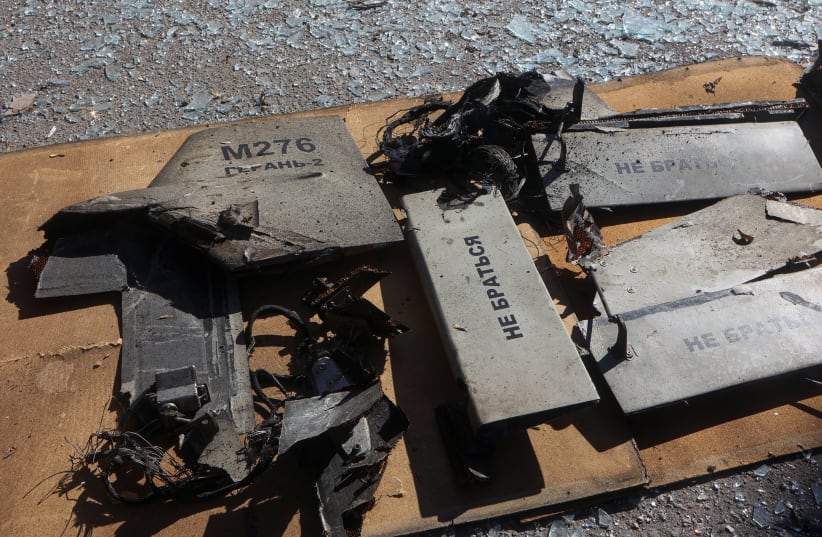Iran is using foreign components, materials and technologies to build its drones, despite the international sanctions against the country, Conflict Armament Research (CAR) stated in a new comprehensive report regarding the use of Iranian drones in Russia, published on Wednesday.
In the report, CAR has physically documented one Shahed-131 UAV, two Shahed-136 UAVs, and one Mohajer-6 UAV. The dissection of the UAVs has confirmed previous reports that Iranian drones are being used by Russia in its invasion of Ukraine.
According to CAR, the Iranian UAVs used by Russia are a "significant jump in hardware" compared to Iranian drones previously used in the Middle East. The upgrade in hardware is partially attributed to high-end components, that are produced outside of Iran, including components that appear on the US sanction list.
Iran has bypassed sanctions for materials
The dissection of the UAVs revealed that they are made "almost exclusively of components produced by companies based in Asia, Europe, and the United States." Moreover, 82% of the manufacturers of these components are based in the US. A large portion of the said components was produced in the last three years.
The report provides a different approach to understanding the Iranian UAV program, suggesting that Iran's UAV program is not based on domestic production capabilities alone as some believed until now.
In early November 2022, a CAR team had access to Shahed-131, Shahed-136 single-use UAVs, and a Mohajer-6 UAV used by Russia in Ukraine. Here's what we found (1/7, report shortcut link: https://t.co/ArjtrG2NHo, h/t @damspleet) pic.twitter.com/hRk3rzSKsw
— CAR (@conflictarm) November 23, 2022
Iran has been sanctioned to varying degrees since 2015, with specific sections of the sanction list dedicated to military components. Some components found in CAR's dissections of the Shahed-131 and Shahed-136 drones qualify as restricted items under UN Security Council resolution 2231.
CAR suggests that Iran "has been able to circumvent current sanction regimes and has added more capabilities and resiliency to its weapons."
Russia has been using Iranian drones in Ukraine since August according to Ukrainian and Western intelligence. Although Russia has consistently denied those claims, Iran has admitted that it delivered drones to Russia prior to the Russian invasion on February 24.
Ukrainian President Volodymyr Zelensky called for Iran to be punished for its arms trade with Russia in a speech given on November 6.
"We will bring this issue not only to the level of our traditional partners. The whole world will know that the Iranian regime helps Russia prolong this war, and therefore prolong the effect of those threats to the world provoked precisely by the Russian war," Zelensky said in his speech.
